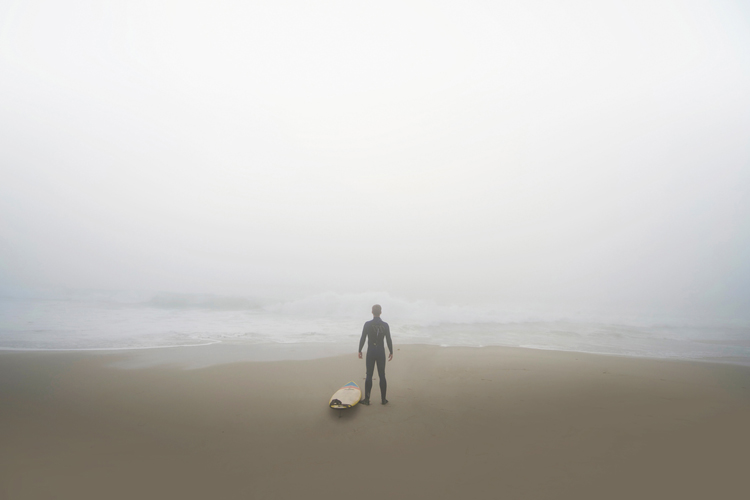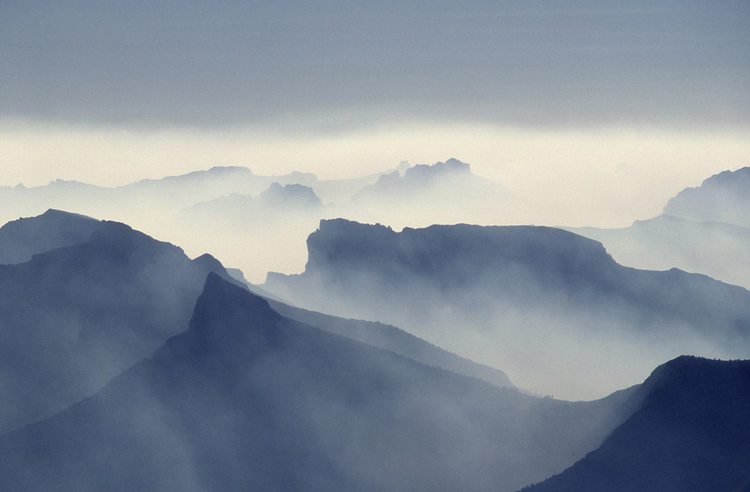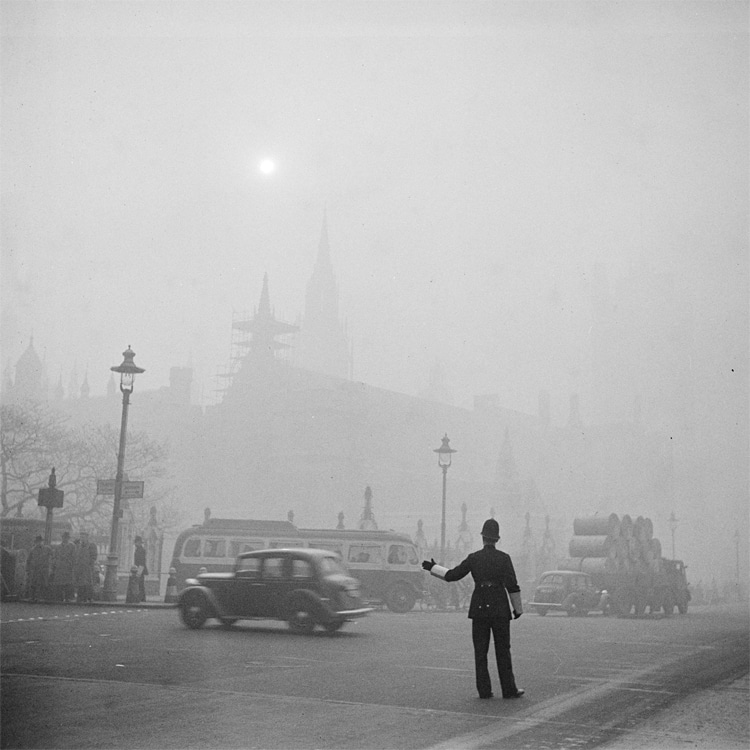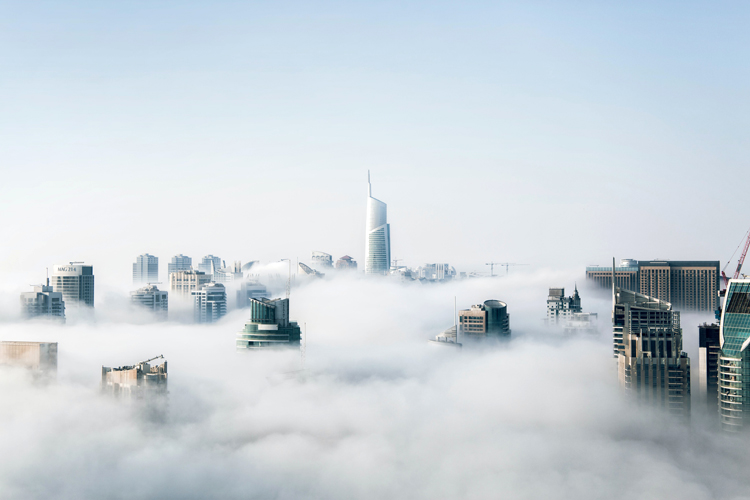Fog is a quite fascinating meteorological phenomenon. It's not exactly a cloud, and it's not exactly rain. Here's how it forms.
Fog can impact a variety of activities.
It can significantly reduce road visibility, making driving hazardous, disrupt air travel, lead to delays or cancellations in boating and shipping, and suspend outdoor sports like surfing, golf, or football.
Some outdoor construction activities may be halted or slowed down if fog impairs visibility, affecting the safety of workers.
Also, during foggy summer days, lifeguards raise red beach warning flags to prevent people from swimming in the ocean.
So, how does fog form? And can it be forecasted?
Fog occurs when water vapor in the air condenses into tiny liquid water droplets, creating a cloud-like event at the Earth's surface.
This happens when the air is cooled to the point - the dew point - where it can no longer hold all its moisture, which then turns into countless small droplets, creating fog.
Cooling can happen in different ways, like through radiation (ground losing heat) or advection (movement over a cold surface).
Imagine the air as a sponge that can only hold a certain amount of water.
When it gets too full and saturated, it drips- the air gets too full of water vapor and creates fog.

Types of Fog
There are several types of fog.
Each has unique characteristics and may occur in the same or different places or regions.
- Radiation Fog: It occurs when the ground cools after sunset, leading to cooling of the air above its dew point. Light winds, less than 15 miles per hour (24 kilometers per hour), are necessary to prevent the mixing of moist and dry air. It's often observed in valleys and basins;
- Precipitation Fog: It forms when rain falls through cold air, increasing the moisture content near the ground. It can be dense and long-lasting, often associated with drizzle, light rain, or snow;
- Advection Fog: It arises when warm, moist air moves over a cool surface, typically found along coastlines. Unlike radiation fog, it can form at any time of day and persist for long periods;
- Steam Fog: It takes place when cold, dry air moves over warmer bodies of water, typically in the fall season. It appears as wisps or tendrils rising from the water's surface and is mainly influenced by the temperature contrast between air and water;
- Valley Fog: It develops in valleys after rainfall when moisture-laden air meets the dew point temperature. It's dense and can last several hours or days, often occurring in cooler months like autumn and winter;
- Freezing Fog: It occurs at temperatures of 32 °F (0 °C) or below, causing water droplets to freeze upon contact with objects. It creates a glaze of ice on surfaces and can significantly reduce visibility;
- Ice Fog: It happens in polar and arctic regions under extremely cold temperatures, where air can't hold super-cooled water droplets, leading to the formation of small ice crystals suspended in the air;
- Hail Fog: It's a rare type that forms shortly after a heavy hailstorm when cold balls of ice fall into warm, moist air. It tends to be patchy and shallow;

What is Smog?
The word "smog" combines two words: smoke and fog.
British physician Harold Des Voeux coined the term in 1911 when he became concerned about air quality.
The 1952 Great Smog of London was a severe air pollution event that affected the British capital for several days in December 1952.
A deadly blend of cold weather, an anticyclone, windless conditions, and airborne pollutants related to the use of coal formed a thick layer of smog over the English capital.
The smog was so dense that it significantly reduced visibility and penetrated indoor areas.
The event caused major disruption throughout the city, including transportation and health issues, leading to an estimated 4,000 to 12,000 deaths.
The severity of the Great Smog led to increased awareness of air pollution and resulted in changes in environmental policies, including the Clean Air Acts of 1956 and 1968 in the UK.

Interesting Facts About Fog
Meteorologists and weather experts describe fog in terms of visibility levels and how far you can see through it:
- Ordinary Fog: You can see for about 1,100 yards (1,000 meters);
- Thick Fog: You can only see 55-220 yards (50-200 meters);
- Dense Fog: You can see for less than 55 yards (50 meters);
Mist and fog are different types of the same thing - mist is finer and lighter than fog.
In some parts of the world, like the coasts of California and Chile, fog is essential for the growth of redwood forests and other ecosystems, providing much-needed moisture.
In areas with scarce water resources, fog nets are used to collect water droplets from fog, providing a sustainable water source.
Also, if warm, moist air blows over cold seas, thick fog forms in high mounds called banks.
This fog is very dangerous for sailors since they can't tell where they're going or what's in front of them.
Named "Karl the Fog" by locals, the fog in San Francisco is so iconic it even has a Twitter account. A white blanket often surrounds the Golden Gate Bridge.
Like rainbows, fogbows are created by sunlight shining through fog, but they usually appear as white arcs due to the smaller water droplets in fog.
The foggiest place in the world is Grand Banks off the coast of Newfoundland, Canada, where the cold Labrador Current meets the warmer Gulf Stream.
During World War II, artificial fog was sometimes used as a defense mechanism to hide ships and landmarks from enemy sight.
Under certain conditions, fog can create optical illusions such as Fata Morgana, a complex form of mirage seen in a narrow band above the horizon.
Are you scared of the mysterious mist? You're not alone - homichlophobia is the fear of fog.
